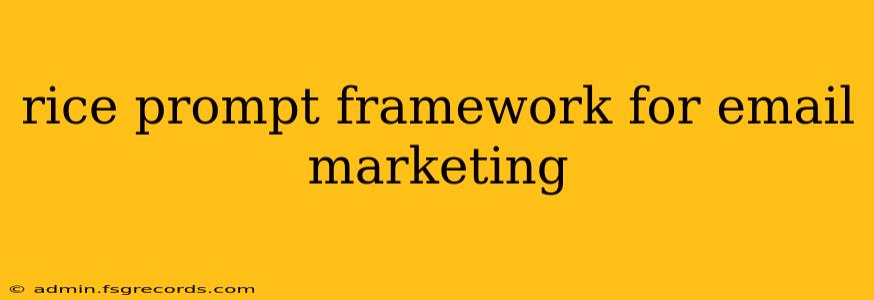Email marketing remains a powerful tool for businesses of all sizes. But crafting compelling emails that convert requires a strategic approach. The RICE scoring framework, a prioritization method commonly used in product development, offers a valuable lens for optimizing your email marketing campaigns. This guide will explore how to leverage the RICE scoring framework to improve your email strategy and achieve better results.
Understanding the RICE Scoring Framework
RICE stands for Reach, Impact, Confidence, and Effort. Each element is scored numerically, allowing you to objectively compare different email campaign ideas and prioritize those with the highest potential return on investment.
-
Reach: How many subscribers will receive this email? Consider segmentation and list size. A higher reach score indicates a broader audience.
-
Impact: What's the potential impact of this email? Will it drive sales, increase website traffic, boost brand awareness, or generate leads? A higher impact score reflects a greater potential positive outcome.
-
Confidence: How confident are you that this email will achieve its intended impact? This is a subjective score based on past performance, market research, and your gut feeling. Higher confidence suggests a greater likelihood of success.
-
Effort: How much time, resources, and effort will be required to create and send this email? Consider design, copywriting, testing, and automation. A lower effort score is preferable.
Applying the RICE Framework to Email Marketing
Let's break down how to apply each component to your email campaigns:
1. Reach: Calculating Your Audience
-
Segmentation: Don't send a generic email to your entire list. Segment your audience based on demographics, behavior, purchase history, and engagement levels. Targeted emails have higher conversion rates.
-
List Growth: Continuously work on growing your email list through various channels such as website signup forms, social media promotions, and content upgrades. A larger, segmented list directly impacts your reach.
-
Example: An email targeting high-value customers (segment) with a list size of 5,000 subscribers might receive a higher reach score than a blast email to a list of 50,000 unsegmented subscribers.
2. Impact: Defining Your Goals
-
Specific Objectives: Clearly define the goal of each email campaign. Is it to drive sales, promote a new product, increase website traffic, or encourage sign-ups for a webinar?
-
Key Performance Indicators (KPIs): Track relevant KPIs like open rates, click-through rates, conversion rates, and revenue generated. These metrics provide data-driven insights into your email's impact.
-
Example: An email promoting a limited-time discount with a high conversion rate will receive a higher impact score than a brand awareness email with lower engagement.
3. Confidence: Assessing Your Certainty
-
Past Performance: Analyze the success of similar past campaigns. What worked well? What didn't? This data informs your confidence level.
-
A/B Testing: Experiment with different subject lines, email copy, and call-to-actions to optimize your campaigns. Testing increases your confidence in future campaigns.
-
Market Research: Stay updated on industry trends and best practices. Understanding your audience's preferences boosts your ability to predict success.
-
Example: An email based on a successful past campaign with similar targeting and messaging will receive a higher confidence score than a completely new and untested approach.
4. Effort: Evaluating Resource Allocation
-
Design & Copywriting: Consider the complexity of design and the time required to write compelling copy.
-
Automation: Leverage automation tools to streamline your email marketing workflow. Automated emails generally require less effort.
-
Personalization: While personalization increases impact, it can also increase effort. Weigh the benefits against the resource requirements.
-
Example: A simple text-based email with automated sending requires less effort than a highly designed, personalized email requiring manual intervention.
Scoring and Prioritization
Once you've assigned numerical scores (e.g., 1-5) to each factor for multiple email campaign ideas, calculate the RICE score:
RICE Score = (Reach × Impact × Confidence) / Effort
The email campaign with the highest RICE score should be prioritized. Remember that the RICE framework isn't about perfection; it's about informed decision-making to optimize your email marketing strategy and maximize your ROI. Regularly review and refine your approach based on performance data.
Conclusion
By using the RICE framework, you can move beyond gut feelings and make data-driven decisions about your email marketing campaigns. This structured approach helps to ensure that your efforts are focused on the most impactful and efficient strategies, ultimately leading to a better return on your email marketing investment. Implement this framework today and watch your email marketing results improve.

